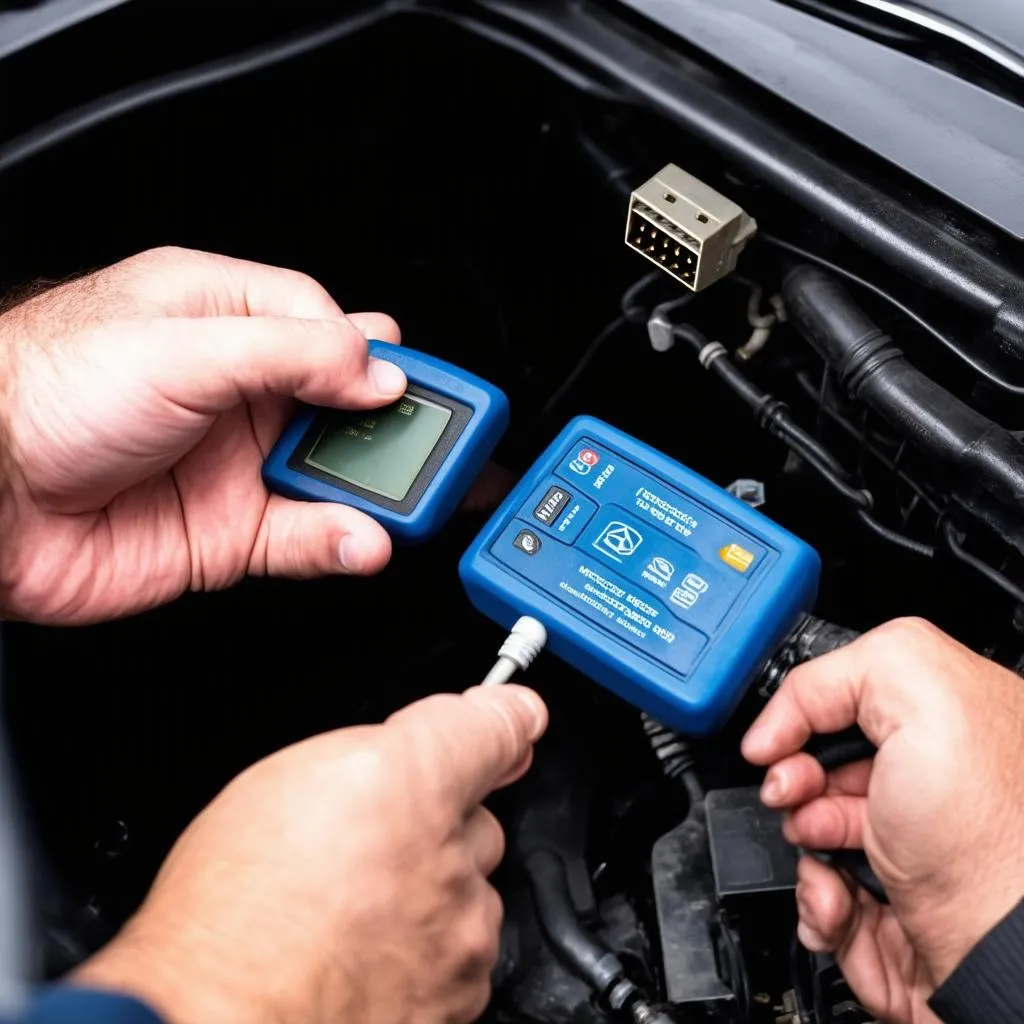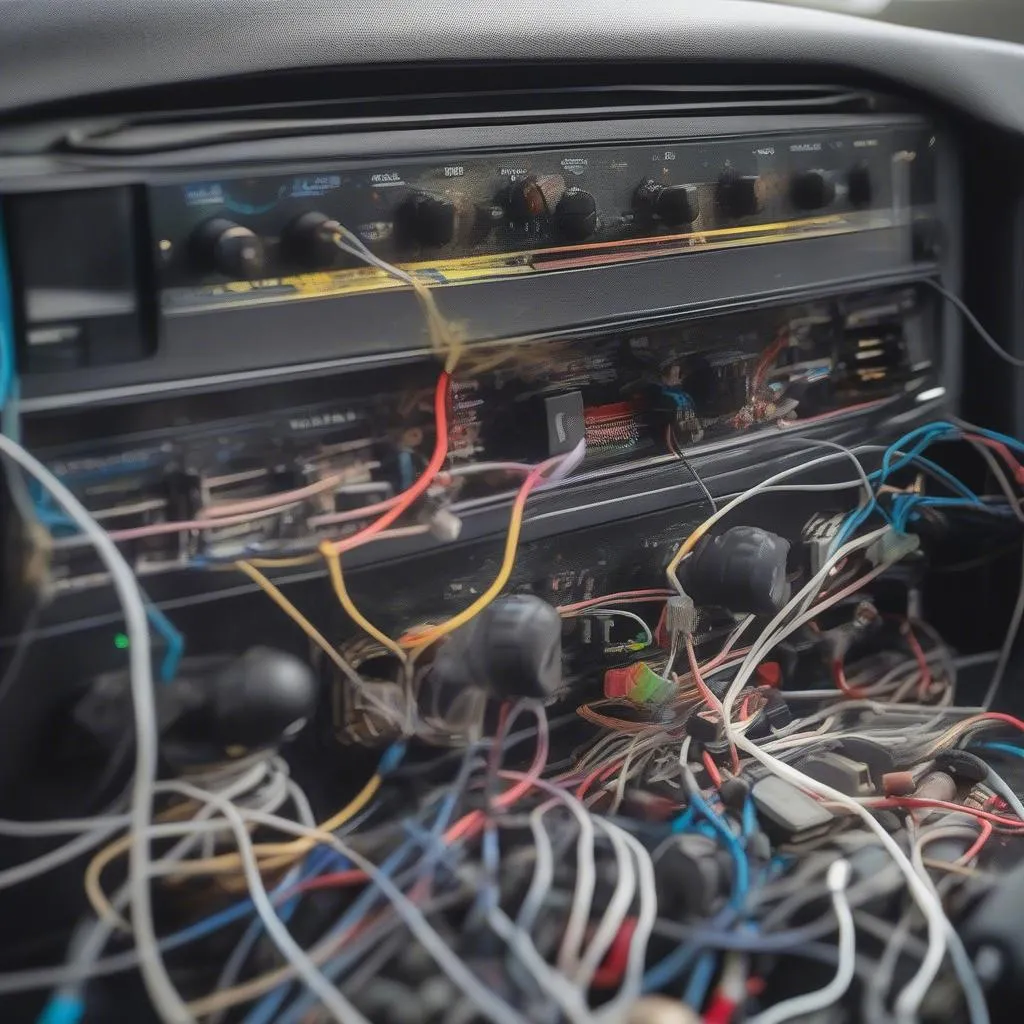A stuck door on your Mercedes E320 can be a real pain, especially if it’s the passenger side. Don’t worry, though. We’ll walk you through troubleshooting and fixing this common issue, getting you back on the road with all doors opening smoothly.
Understanding Why Your Door is Jammed
Before you start taking things apart, it’s important to pinpoint the cause of the jam. Here are some common culprits in a 2000 Mercedes E320:
- Faulty Door Lock Actuator: Over time, the actuator that controls the locking mechanism can wear out or malfunction, causing the door to stay locked.
- Worn Door Latch Assembly: The latch itself, which catches and releases the door striker, can become worn or damaged, preventing the door from opening.
- Damaged Door Striker: The metal plate on the car’s body that the door latch grabs onto can bend or become misaligned, making it difficult for the latch to engage properly.
- Broken Door Handle or Cable: If the exterior or interior door handles feel loose or unresponsive, the cable connecting them to the latch mechanism might be broken.
- Binding Door Hinge Pins: Rusted or dry hinge pins can create excessive friction, making it hard to open the door smoothly.
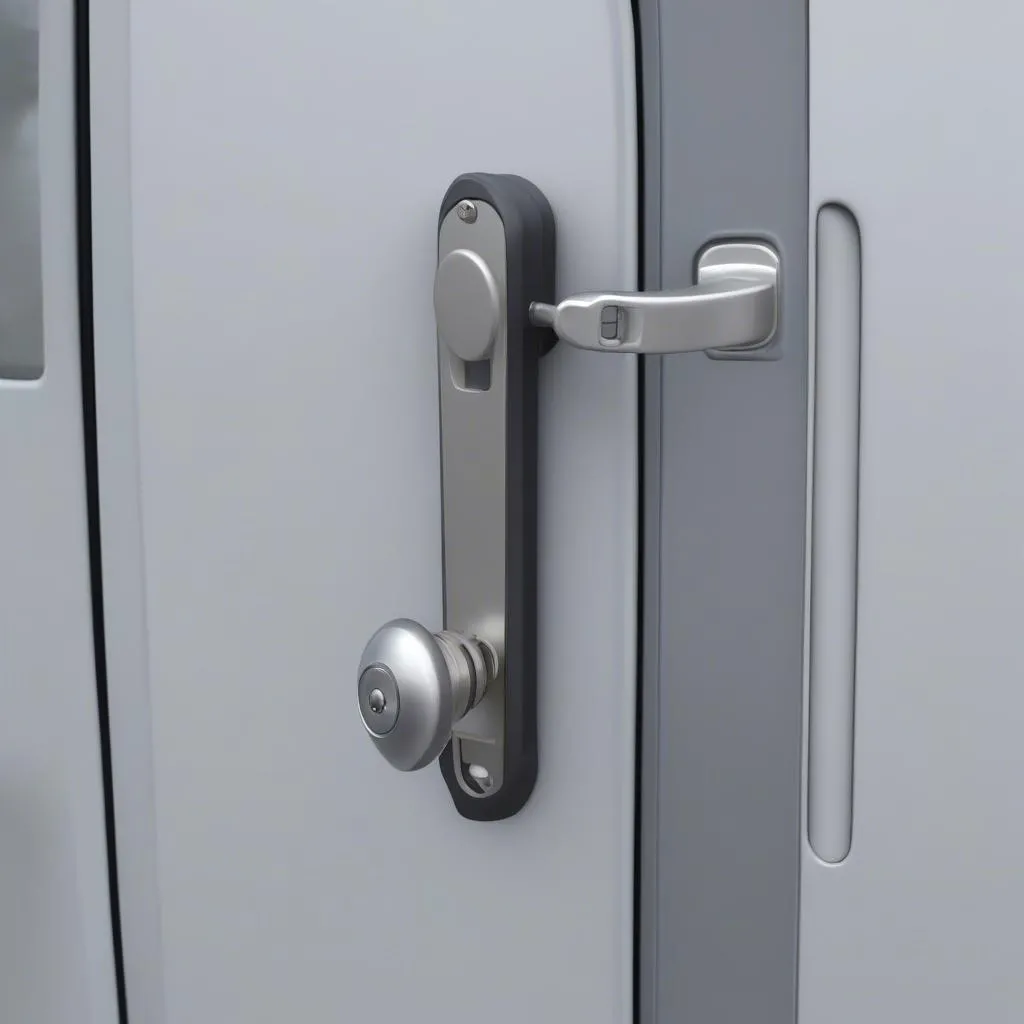 Mercedes E320 Door Components
Mercedes E320 Door Components
Identifying the Problem
- Listen closely: When you try the door handle, do you hear any noises from inside the door panel? A clicking or whirring sound might indicate a problem with the actuator.
- Check for Obstructions: Examine the door frame and the area around the latch for any debris or objects that might be obstructing the door from closing properly.
- Inspect the Striker Plate: Is it bent or misaligned? This can prevent the door latch from engaging correctly.
Tools and Materials
To fix your jammed door, you’ll likely need some or all of the following:
- Screwdriver set (Phillips and flathead)
- Torx bit set
- Socket wrench set
- Panel removal tools
- WD-40 or other penetrating lubricant
- Replacement parts (door lock actuator, latch assembly, striker plate, etc.)
- Work gloves
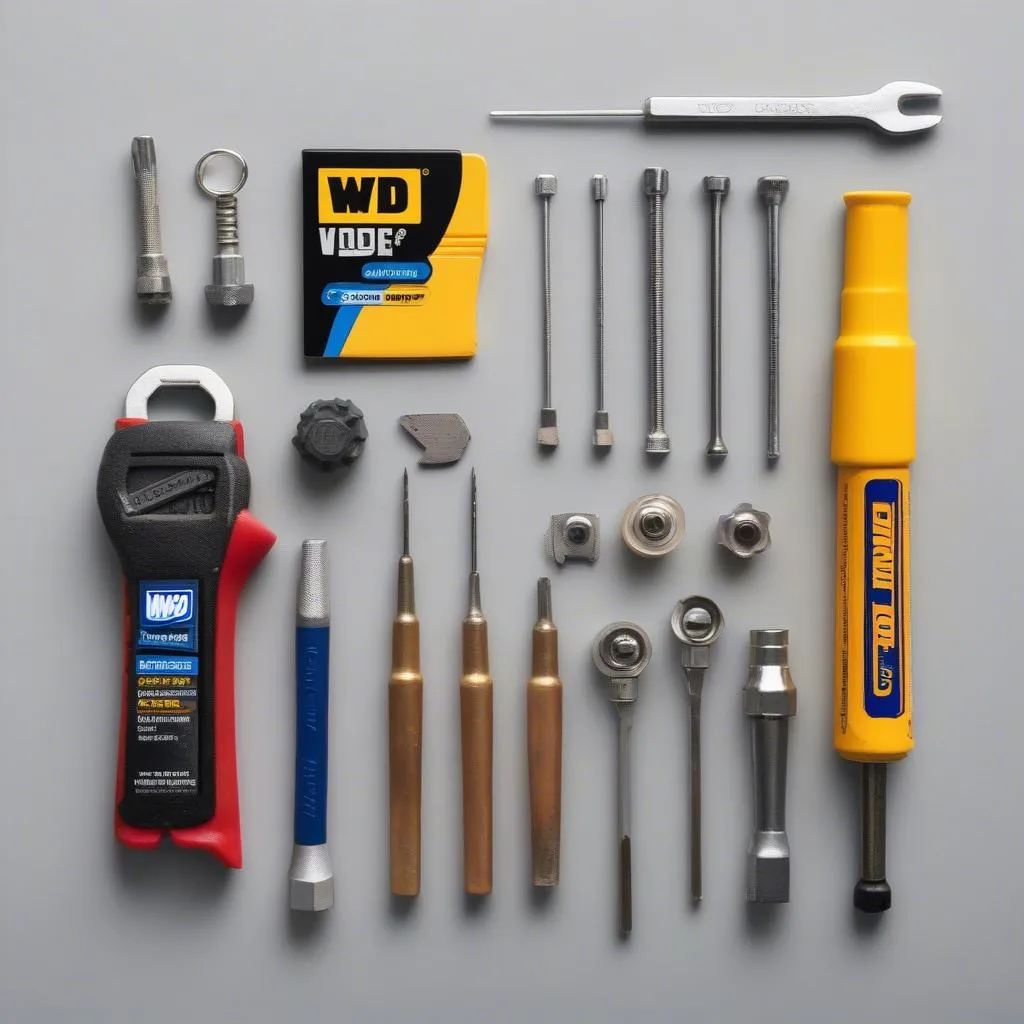 Car Door Repair Tools
Car Door Repair Tools
Step-by-Step Repair Guide
Let’s look at how to address the most common causes of a jammed passenger door:
1. Lubricate the Latch and Striker:
- Apply a generous amount of penetrating lubricant to the door latch assembly and the striker plate.
- Work the latch and try opening and closing the door several times to spread the lubricant.
2. Check the Door Lock Actuator:
- If lubrication doesn’t solve the issue, you’ll need to access the door lock actuator, usually located behind the door panel.
- Disconnect the electrical connector and try manually operating the actuator to see if it’s functioning correctly.
- If the actuator is faulty, you’ll need to replace it.
3. Inspect the Door Latch Assembly:
- If the actuator appears to be working, the latch assembly itself might be the culprit.
- Carefully examine it for wear, damage, or misalignment.
- If necessary, replace the entire latch assembly.
4. Examine the Door Handle and Cables:
- If the handle feels loose or unresponsive, the cable connecting it to the latch might be broken.
- Remove the door panel and inspect the cables for damage or looseness.
- Replace any damaged or worn components.
5. Address Binding Door Hinge Pins:
- If the door feels stiff and difficult to open even when unlocked, the hinge pins might be binding.
- Apply penetrating lubricant to the hinge pins and work them back and forth to free them up.
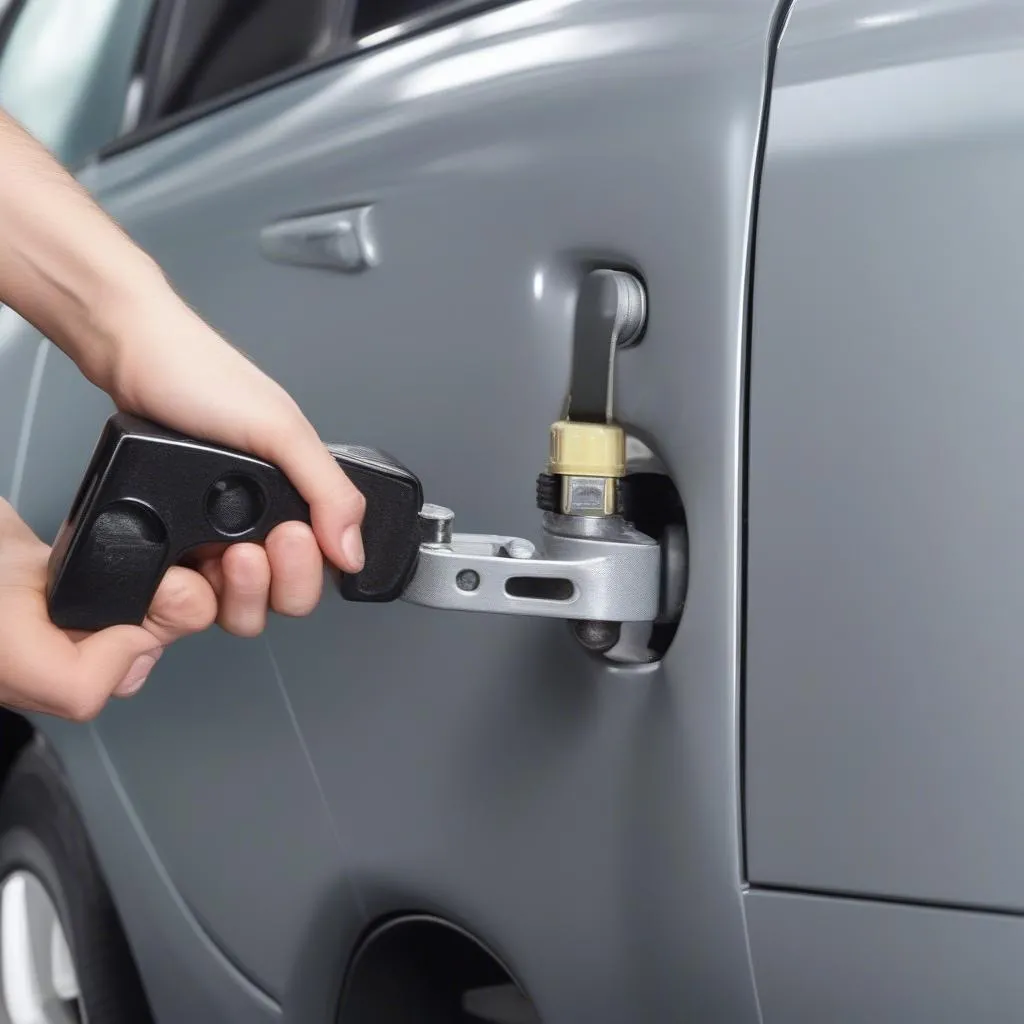 Lubricating Car Door Hinges
Lubricating Car Door Hinges
FAQs
Q: Can I use a diagnostic tool to troubleshoot my jammed door?
A: Yes, a diagnostic tool, like those offered by CARDIAGTECH, can be helpful in identifying issues with the door lock actuator or other electronic components related to the door locking system.
Q: My door still won’t open after trying these steps. What should I do?
A: It’s best to consult with a qualified mechanic or automotive locksmith for further diagnosis and repair. They have the expertise and specialized tools to handle more complex door issues.
Q: How can I prevent my car doors from getting jammed in the future?
A: Regularly lubricate the door latches, striker plates, and hinges. Also, ensure the door seals are in good condition to prevent water intrusion and corrosion.
Conclusion
A jammed door on your 2000 Mercedes E320 can be a frustrating experience. However, by understanding the common causes and following the troubleshooting steps outlined in this guide, you can often diagnose and fix the problem yourself. Remember, if you’re unsure about any step or the issue persists, it’s always best to consult with a professional mechanic to avoid causing further damage.

